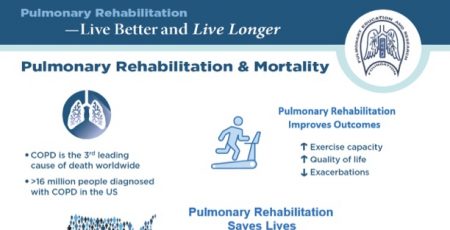23 Feb A Detailed Guide to Exercising With COPD – Part 2
Last week we discussed the benefits of exercising when living with COPD, and we talked about types of exercise you can do. This week we’ll cover guidelines on exercise duration, frequency, and best practices for maintaining a safe exercise regimen.
While you want to build up conditioning and endurance, you should be careful not to over-exert yourself. Avoid pushing yourself into a breathless state, which will not only be unpleasant, it will discourage you from trying to exercise again.
Always Start With A Warm-Up Session
Don’t exercise right after eating. Wait at least an hour and a half after a meal to exercise. Always start with a 3- to 5-minute warm-up phase. This will increase your heart rate and your body temperature slowly, and will allow your muscles to loosen up so you will be more flexible. A smooth warm-up also allows you to increase the rate of your breathing gradually, so you can comfortable adjust to the added demands of the exercise session to come. A good way to warm up is to do some stretching, and then start your exercise activity at a low level.
Next, Your Conditioning Phase
This is the point in your exercise routine when you reach full speed, weight, or intensity, depending upon what it is you’re doing. At this point you’re working your hardest and receiving the most important benefits from your exercise. Don’t be discouraged if this conditioning phase lasts only a short while at first. The fact that you’re doing any exercise at all is already a giant leap forward. Know that as you continue to practice your exercise sessions, your conditioning phase will slowly increase. It will take time, just as it does for anyone starting a new exercise program, whether they have COPD or not.
Finally, The Cool Down
When you know you’ve reached the limit of what you can endure, slow down, but don’t stop moving abruptly. Go from a jog to a walk, or from a brisk walk to a slow pace. Slow the speed of the elliptical or other machine you’ve been using, or slow down the activity with your grandchild if you’re playing with him. If you’ve been weightlifting, lift some light weights at a slow pace and then follow with some stretching. It’s as important to let your body wind down as it is to warm it up. Ease out of “exercise” and into your resting state. The cool-down phase is a great time to concentrate on your breathing exercises too. Be conscious about taking regular breaths and and slowing your rate down. Concentrate on being in control of your breath.
How Often and How Long Should You Exercise?
The golden rule: Start by exercising as long as you can comfortably work. If that’s five minutes, so be it. You’re working on improving, not on becoming an Olympic star from day one. If you keep at it, your endurance will improve and you’ll be able to exercise for longer stretches of time. A good goal to work toward is 20 to 30 minutes of exercise per session, and 3 to 4 sessions per week.
Sticking With Your Exercise Plan
The best way to increase your chances of sticking with your exercise plan and achieving improvement is to start with a form of exercise that you enjoy. Some people do best when they can be outside; others prefer a steady predictable environment like a gym, where they might find friends and experience some camaraderie while they work out. Still others enjoy setting personal goals and beating them, in effect competing with themselves. Some might like working out with friends, or with a personal trainer. Ask yourself not what you “should” be doing, but what you’d most like to do. Then try to make an exercise plan that incorporates your most favored activities. Let’s face it; the carrot is always a better motivator than the stick, right?
Pulmonary Rehabilitation
If it’s available to you, pulmonary rehabilitation can be one of the very best ways to improve your conditioning, your stamina, and your breathing. Not only will you be exercising and increasing your strength and endurance, you’ll also be receiving specialized assistance and information from trained medical specialists, on exercise, nutrition, COPD symptom management, breathing techniques, and disease education, and you’ll likely be using equipment known to be the most beneficial for COPD patients. The COPD Foundation maintains a listing of over 230 PEP (Pulmonary Education Program) Pulmonary Rehabilitation programs across the country. To find a program near you, click here.
Information for this article was obtained from the COPD Store.





No Comments